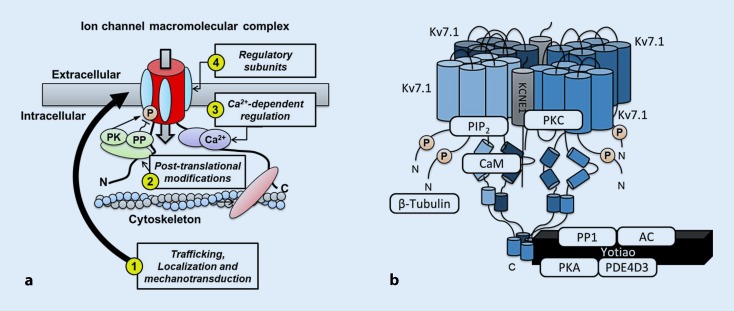Fig. 2.
Regulation of ion channels and sarcoplasmic reticulum (SR) Ca2+-handling proteins through macromolecular complexes. a The composition of the macromolecular complex controls: 1 Trafficking, localization and mechanosensitive regulation of ion channels and Ca2+-handling proteins, e. g., through regulatory subunits (cyan ellipses) that mask endoplasmic reticulum retention signals or proteins interacting with various components of the cytoskeleton (red); 2 Posttranslational modifications, e. g., phosphorylation (orange “P”) through anchoring of protein kinases (PK), phosphatases (PP) and other enzymes (green); 3 Ca2+-dependent regulation, e. g., mediated by calmodulin (purple); and 4 Channel gating and biophysical properties, e. g., through regulatory subunits. b Example of the macromolecular complex controlling the slow delayed-rectifier K+ current (I Ks). The channel consists of a tetramer of Kv7.1 pore-forming α subunits, KCNE1 β subunits, an A‑kinase anchoring protein (Yotiao) that targets protein kinase A (PKA), protein phosphatase type-1 (PP1), adenylyl cyclase (AC), and phosphodiesterase (PDE) 4D3 to the channel, as well as the Ca2+-binding protein calmodulin (CaM), protein kinase C (PKC), phosphatidylinositol 4,5-bisphosphate (PIP 2) and β‑tubulin

